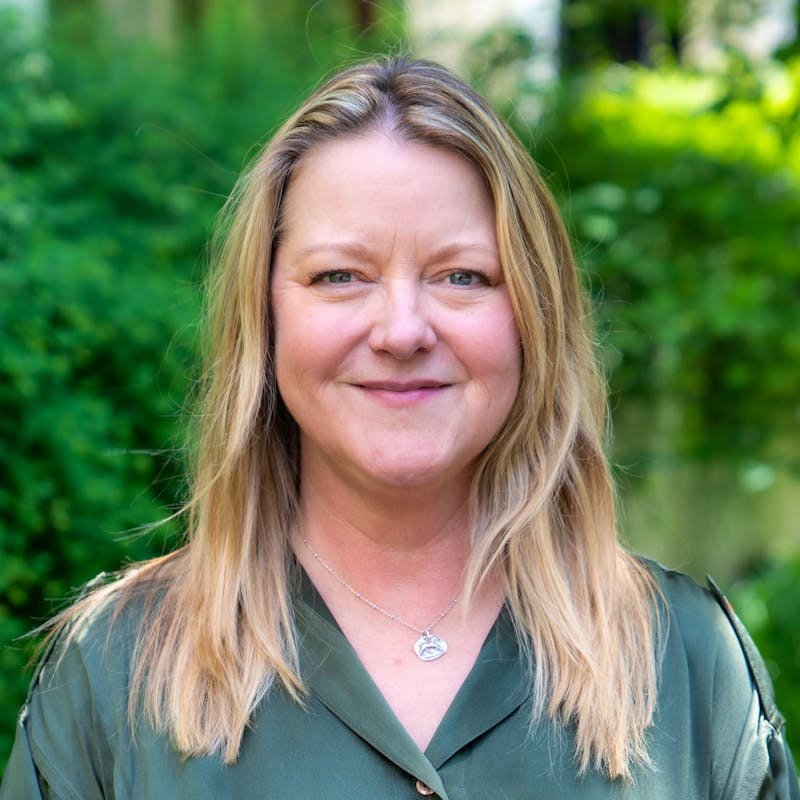The Road to Conserving Native Plains Wildlife
I will never forget the time I toured the bison herd of the Assiniboine and Sioux Tribes of Fort Peck in northern Montana. Robbie Magnan, buffalo manager, and I had just finished mapping the newly acquired cattle grazing lease that Defenders helped the Tribal Council secure for their bison. We were planning a perimeter fence project. As we drove off in his pickup, he stopped and pointed to the hillside. With my binoculars, I could see a lone bison bull which are often solitary creatures. Robbie said this was now the dominant bull having won a battle with another during the bison rut. These bulls live to breed and will fight ferociously for the right to do so. Robbie also told me the other bull eventually succumbed to his injuries. What was amazing, he explained, was the entire herd surrounded the former dominant bull, holding vigil, mourning for days. How remarkable to have witnessed such behavior.
For me, to see these animals up close, especially after the calving season, is equally remarkable. Females lead the herd to their grazing sites. Yearling bulls run around, chase each other and learn the ways of the bull. Calves hop around and play but never wander too far from their mothers.
Joining the ranks of our national bird the bald eagle, the American bison was named the national mammal of the U.S. in 2016. Its story has a dark history but today the bison is one of the great conservation successes. In the 19th century, tens of millions of bison roamed North America. Native Americans of the plains survived on bison by following herds. Unfortunately, by the late 1800s there were only a few hundred left in the country after frontier settlers hunted the bison to near extinction, while also pushing Native Americans onto reservations. The combination caused a devastating and lasting impact to the Tribes’ culture and way of life.
Bison are a keystone species and essential to the health of the prairie ecosystem. Today, however, they are considered ecologically extinct as populations are so low the species no longer interacts or substantially contributes to grassland biodiversity. One challenge to restoration efforts is gaining support from agricultural interests. Ranchers often question why there is a need to restore bison when we now have cattle. I use this as opportunity to explain how we can have both: ranchlands are important to our American heritage, while the great plains of this land have historically thrived with bison present. In fact, bison and cattle do coexist on large landscapes with proper perimeter fencing to ensure each are managed on their dedicated lands.
In terms of ecological benefit to grasslands, bison interact with the land differently than cattle. Herds travel and graze in a mosaic pattern, spreading native grass seeds as they go, which enhances growth of nutritious grasses and forbs (flowering plants). Bison evolved on the prairie grasslands, and the grasslands evolved with bison, which is why it is crucial we restore bison in the large roaming herds that our ecosystems need. Unfortunately, our grasslands may never be inhabited again by millions of bison, but we are working to create herds of 1,000 animals which would provide conservation and cultural value. These herds begin to make up for the atrocities of the past when we nearly wiped out the entire species.
There is hope for bison. The wild herds roaming around Yellowstone National Park are the descendants of the last remaining bison that roamed the West. Bringing bison back ecologically to places like Yellowstone and culturally for Tribal communities is the right thing to do, and it’s why Defenders of Wildlife has made it a priority.
Partnering with Buffalo Nations is particularly rewarding. In addition to the Assiniboine and Sioux, we partner with the A’aninin and the Nakoda of Fort Belknap, the Chippewa Cree Tribe of Rocky Boy and the Blackfeet Nation. Defenders also has an agreement with the InterTribal Buffalo Council to support the transfer of Yellowstone bison to their member Tribes (84 nations) for starting and expanding cultural herds on Tribal lands.
Within these partnerships, Defenders supports a variety of field projects financially and on-the-ground. We also partner with land trusts such as American Prairie in Montana and Southern Plains Land Trust in Colorado on their bison programs. And we support the Yellowstone Bison Conservation Transfer Program, designed to divert bison from slaughter and instead transfer them to Tribal lands across the West.
As we enter November — which honors Indigenous communities as Native American Heritage Month and celebrates bison on November 4 — I encourage you to share the bison’s story, advocate for the protection of this animal and honor and acknowledge Indigenous communities for their leadership and success in bringing back bison to the plains.
This is the fourth installment of our monthly blog series, The Road to Conserving of Native Plains Wildlife. Missed the last one? Read it here. Be sure to check back at the end of November for the next story.









